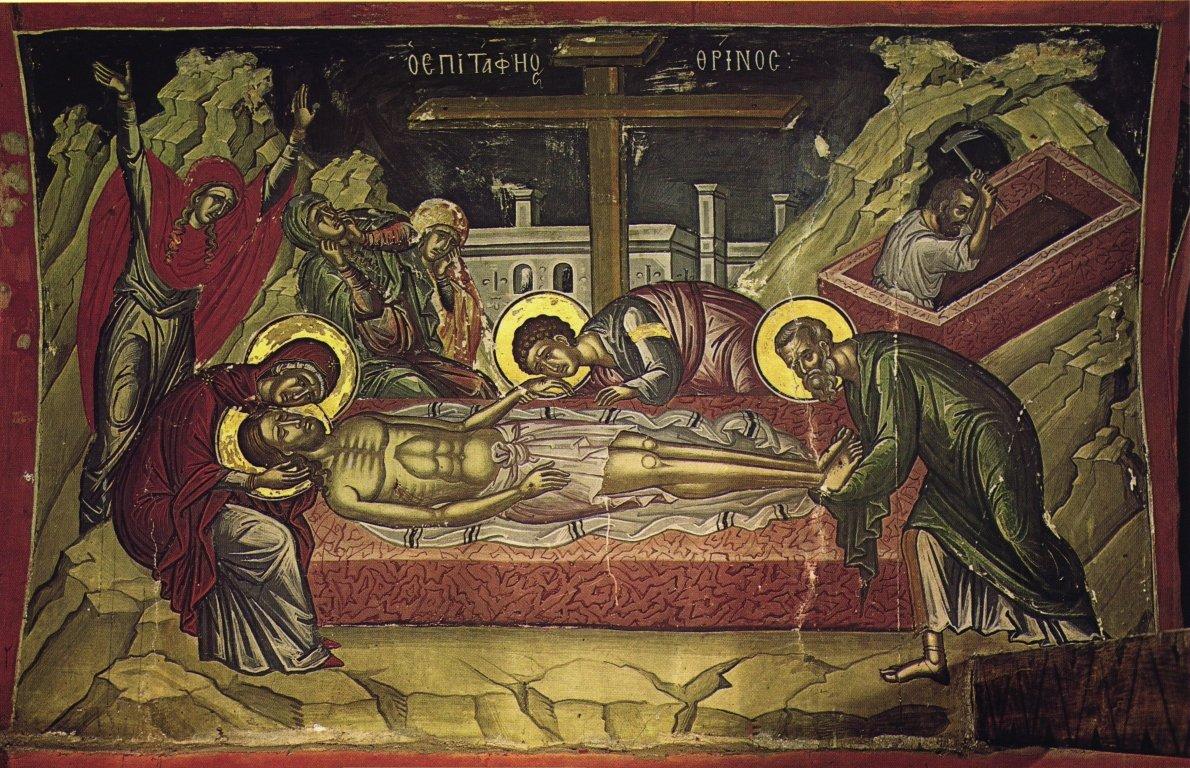|
This service starts off with a Vespers and then moves into the Liturgy of St. Basil. During the Vespers, a number of prophecies from the Old Testament are read. After the prophecies, the Divine Liturgy of St. Basil begins. After the epistle reading, the priest scatters bay leaves around the church as a sign of Christ’s victory over death. After that, the lesson from the gospel is read and the Liturgy continues as usual. Theme: Christ’s resurrection Prophecies: Genesis 1:1-13, Jonah, Daniel 3:1-57 (including the Hymn of the Three Youths); Epistle: Romans 6:3-11, Gospel: Matthew 28:1-20 All of the hymns during this service are paschal, or resurrectional, in nature. We have eagerly awaited the moment of His resurrection, and during this service, we get a foretaste of the tremendous joy of that moment. The odd thing is that this is done so early on Saturday. This is because this Liturgy used to be a part of a long Paschal vigil that started late in the afternoon and which lasted towards midnight. Now, however, the service has been pushed back to the morning. So even though the hymns and Gospel Lesson describe the resurrection, we still have to wait until midnight before we can truly celebrate it. After the entrance with the Gospels, there are three readings from the Old Testament. The first reading
is from Genesis and recounts the first three days of creation. Please note the symbolism of recounting just the first three days of creation – as Christ, the Author of that very Creation – was in the tomb for three days (please know that 3 days in the tomb does not mean 72 hours – it means He was put in on Friday, stayed Saturday, and arose from there on Sunday – thus three days, but not a 72-hour period). On day one, Light was created, and it was good. On day two, God created Heaven, and it was good. On day three God created the earth and the plants, and it was good. In the first three days, God created the essentials for man – light (which is a part of Who God is), the Heavens (the place from which man comes), and earth (the place man had dominion over). Most importantly, we have to remember the nature of creation. “In the beginning God created Heaven and Earth. And the earth was void and empty, and darkness was upon the face of the deep: and the spirit of God (Holy Spirit – which is always associated with the waters of baptism…) moved over the waters. And God said...” (and a Word comes forth from God – that Word is Jesus Christ – when God speaks, Christ acts – that is why Christ is always depicted in icons of the creation). In the first 2 verses of Genesis, we have an understanding of the Holy Trinity and we know that Christ is the person of the Trinity who completes the work of Creation. In other words, He is the Author of that creation, the great Maker, the great Artificer. Many, many of the hymns in Holy Week describe the paradox that the Author of Creation, Who made man out of the elements of His own Creation, is ultimately betrayed by His own Creation and sent to His death by him. The second reading is from the book of Jonah (pretty much the entire book). The obvious connection is that Jonah was in the belly of the whale for 3 days as Christ was in the tomb three days. But it is much more than that. It is also about: 1) being obedient to God (Jonah kept saying he would do things for God, but often tried to avoid doing what God asked him to do simply because he did not like what he was being asked to do) 2) understanding that God has a plan for all of the world because He loves all people (that is why God asks Jonah to go and preach in Nineveh, and when he does, the entire city starts to turn to God!!...) 3) God teaches us, through Jonah, that “… my thoughts are not your thoughts, nor are your ways My ways,” says the Lord.” (Isaiah 55:8) We want things to always go our way, according to our plans. Sometimes, we always have to do things God’s way and often times should let Him do the driving… The third reading is from the Book of Daniel. Here, the people, included those who believed in God, were told that they must worship an idol the king (Nabuchodonosor) had made. Three faithful young men refused and were thrown into a fiery furnace. While in the furnace, they were not burned and an angel appeared with them in the fire. These three represent the three days Christ was in the tomb. At a certain point, the hymn of the three youths is chanted with the refrain to each verse, “Praise you, the Lord and exalt Him forever.” The three youths gave praise to God that they were not destroyed in the furnace. This is recorded in the Book of Daniel according to the oldest and correct version of the Old Testament, the Septuagint. In most Bibles, the Hymn of the three youths is omitted or stuck amongst the deuterocanonical material. This is because those Bibles use a far less reliable source as their foundational text, the Masoretic text. That aside, it is a beautiful hymn that heaves glory upon glory to God for all that He has created. People, animals, and all forms of nature are called upon to give God glory (for example: sun, moon, light, darkness, winds, frosts, dew, mountains, rivers, lighting, whales, fish, birds, beasts, and all manner of men, etc.). We all give God glory because through Christ’s resurrection, the curse of Adam is abolished and man’s restoration to God is accomplished. It is interesting to note that according to the Septuagint, the books of the Prophets are not in chronological order. The last three books, Isaiah, Ezekiel, and Daniel, are all have a common thread: each author has a vision of Christ and relates it. Because these books are so important to the prophecies of Christ, it seems as if the authors of the Septuagint placed the order in such a way that the most influential books of the Old Testament regarding Jesus Christ would be located closest to the New Testament! Following that hymn, we enter into the Divine Liturgy and sing they hymn “As many as have been baptized in Christ have put on Christ. Alleluia.” This is sung instead of “Holy God, Holy Mighty, Holy Immortal have mercy on us” for two reasons. A) When we do a Vesperal Divine Liturgy according to St. Basil, that is normally the rubric and B) more importantly, baptism and resurrection are always connected. Christ went into the water to show that we need to bury our old selves in baptismal waters and come out into a new life in Christ – die to our old selves and come to new life in Christ. Going into the water means not simply cleaning; more often than not in the Old Testament it refers to death. When Moses crossed the Red Sea, it was split and so he crossed on dry land. Once they passed, the waters came back and drowned Pharaoh’s army. Egypt was viewed as death to the enslaved Israelites. The left death in Egypt, through the parted waters of the Red Sea, and entered into a new life in the promised land. Furthermore, in the early Church, people were often baptized just prior to Pascha so they could receive Holy Communion on the day of the Resurrection. Following that hymn is the Epistle lesson from St. Paul’s letter to the Romans which connects baptism to resurrection – death to the old self (and death itself!) and life into Christ. After the Epistle lesson, an unusual hymn is sung – no other Divine Liturgy has it. The priest exclaims, “Arise o God and judge the earth; for You shall take all nations to Your inheritance.” (Psalm 82/83:8) As this is being chanted along with the corresponding verses (which come from the proceeding verses in that same Psalm, verses 1-7) the priest throws bay leaves into the air. The bay leaf was a sign of triumph in ancient times. The victors in the Olympic games, for example, were crowned with a laurel of bay leaves. Ancient kings and later on, Roman Emperors, also wore laurel wreaths (bay leaves) as a sign of their position and victory. As we use bay leaves in remembrance of Christ’s triumphal entrance into Jerusalem, so we once again use bay leaves to announce the greatest victory of Christ. This is a magnificent sign of triumph – a sign of Christ’s resurrection from the dead – a sign that the ancient curse of death has been annihilated - a sign that our God is truly a living God Whose purpose in being born in the flesh was to draw all people to Himself. The Gospel lesson which follows is the account of the Resurrection from St. Matthew (28:1-20) in which Mary Magdalene and the other Mary find the tomb empty, the chief priest and elders conspire to lie and say the body was stolen, and then Jesus meets the 11 disciples. After this reading we continue with the Divine Liturgy of St. Basil. Even though we recognize Jesus’ Resurrection, we still have to wait until the evening service and the singing of “Christ is Risen from the dead…” “Christos Anesti…” before we can fully celebrate this glorious feast. With Love in Christ, +Fr. Nick Comments are closed.
|
AuthorsMessages written by the clergy of our parish. Archives
May 2021
Categories
All
|
© 2023
Saint Nicholas Greek Orthodox Church
3109 Scio Church Road, Ann Arbor, MI 48103
Phone: (734) 332-8200
Fax: (734) 332-8201
Saint Nicholas Greek Orthodox Church
3109 Scio Church Road, Ann Arbor, MI 48103
Phone: (734) 332-8200
Fax: (734) 332-8201


 RSS Feed
RSS Feed
